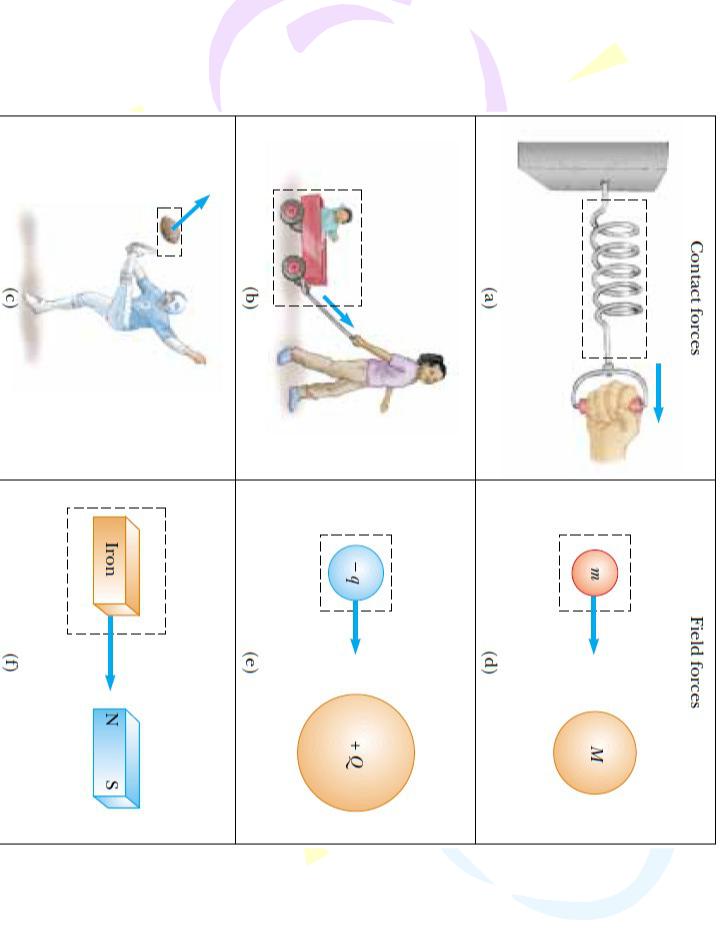
- •Quick Quiz 1 If a car is traveling eastward and slowing down, what
- •Course of lectures «Contemporary Physics: Part1»
- •Previously we described motion in terms of position, velocity, and acceleration without considering
- •contact forces
- •The Concept of Force
- •The Concept of Force
- •Newton’s First Law
- •Newton’s First Law
- •Newton’s First Law
- •Mass
- •Mass
- •Mass
- •Mass
- •Newton’s Second Law
- •Newton’s Second Law
- •Newton’s Second Law
- •Newton’s Second Law
- •Newton’s Second Law
- •Unit of Force
- •The Gravitational Force and
- •The Gravitational Force and
- •Newton’s Third Law
- •Newton’s Third Law
- •Newton’s Third Law
- •Newton’s Third Law
- •Newton’s Third Law
- •Newton’s Third Law
- •Forces of Friction
- •Forces of Friction
- •Forces of Friction
- •Forces of Friction
- •Forces of Friction
- •The magnitude of the force of kinetic friction acting between two surfaces is
- •Newton’s Second Law Applied
- •Figure 2. Overhead view of a ball moving in a circular path in
- •Nonuniform Circular Motion
- •Nonuniform Circular Motion
- •Motion in Accelerated Frames
- •Motion in Accelerated Frames
- •Quick Quiz 1 If a fly collides with the windshield of a fast-moving

Quick Quiz 1 If a car is traveling eastward and slowing down, what is the direction of the force on the car that causes it to slow down? (a) eastward (b) westward (c) neither of these.
Quick Quiz 2 A ball is thrown upward. While the ball is in free fall, does its acceleration (a) increase
(b) decrease (c) increase and then decrease (d) decrease and then increase (e) remain constant?
Quick Quiz 3 After a ball is thrown upward and is in the air, its speed (a) increases (b) decreases (c) increases and then decreases (d) decreases and then increases (e) remains the same.
Quiz 3 After a ball is thrown upward and is in the air, its speed (a) increases (b) decreases (c) increases and then decreases (d) decreases and then increases (e) remains the same.

Course of lectures  «Contemporary Physics: Part1»
«Contemporary Physics: Part1»
Lecture №3
Dynamics of mas point and rigid body.
Newton’s laws. Mass. Force. Forces in mechanics. Gravitational forces. The law of gravity. Elastic forces. Friction forces. Circular Motion and Other Applications of  Newton’s Laws.
Newton’s Laws.

Previously we described motion in terms of position, velocity, and acceleration without considering what might cause that motion. Now we consider the cause—what might cause one object to remain at rest and another object to accelerate? The two main factors we need to consider are the forces acting on an object and the mass of the object. We discuss the three basic laws of motion, which deal with forces and masses and were formulated more than three centuries ago by Isaac Newton. Once we understand these laws, we can answer such questions as “What mechanism changes motion?” and “Why do some objects accelerate more than others?”

contact forces
 feld forces
feld forces

The Concept of Force
The only known fundamental forces in nature are all field forces:
(1)gravitational forces between objects,
(2)electromagnetic forces between electric
charges,
(3)nuclear forces between subatomic particles,
and
(4)weak forces that arise in certain radioactive decay processes.
In classical physics, we are concerned only with gravitational and electromagnetic forces.

The Concept of Force

Newton’s First Law
and Inertial Frames
Moving object can be observed from any number of reference frames. Newton’s first law of motion, sometimes called the law of inertia, defines a special set of reference frames called inertial frames. This law can be stated as follows: 
If an object does not interact with other objects, it is possible to identify a reference frame  in which the object has zero acceleration.
in which the object has zero acceleration.

Newton’s First Law
and Inertial Frames
Such a reference frame is called an inertial frame of reference.
Any reference frame that moves with constant velocity relative to an inertial frame is itself an inertial frame. 

Newton’s First Law
and Inertial Frames
In the absence of external forces, when viewed from an inertial reference frame, an object at rest remains at rest and an object in motion continues in motion with a constant velocity (that is, with a constant speed in a straight line). 
When no force acts on an object, the acceleration of the object is zero.



 Mass
Mass
Mass is that property of an object that specifies how much resistance an object exhibits to changes in its velocity, and the SI unit of mass is the kilogram. The greater the mass of an object, the less that object accelerates under the action of a given applied force.
